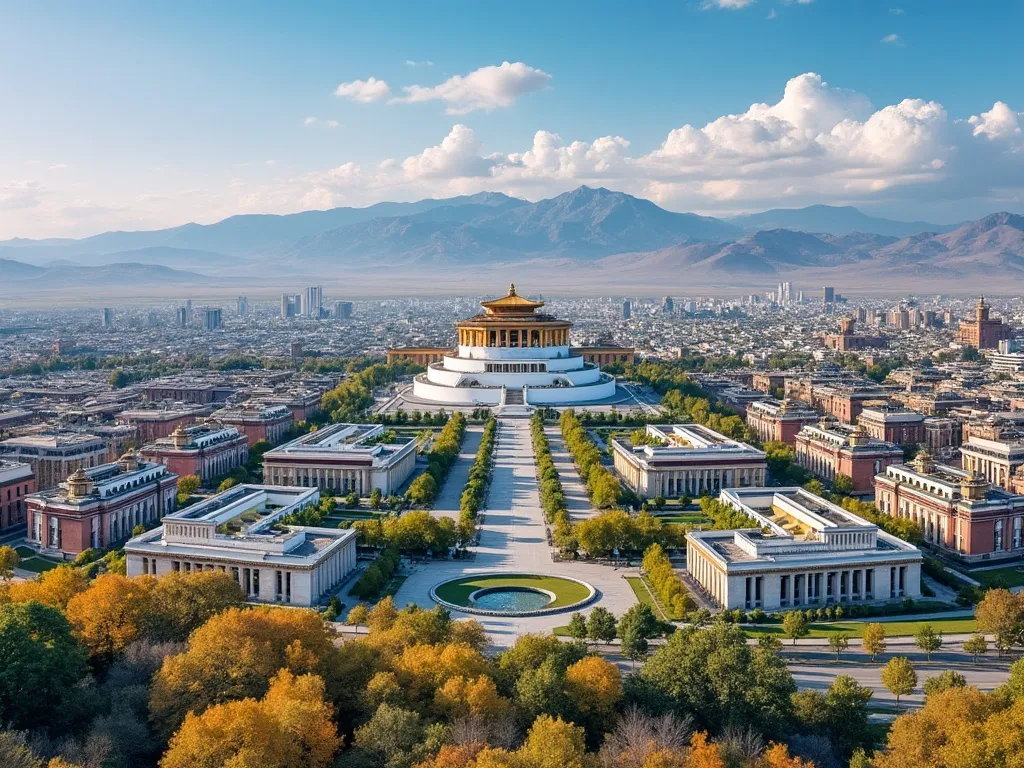
Ulán Bator, la capital de Mongolia, es una metrópolis vibrante y en rápido desarrollo que combina a la perfección la cultura tradicional y moderna. Ubicada en la parte central del país, Ulán Bator está enclavada en el valle del río Tuul, rodeada por cuatro montañas sagradas.
Información sobre Ulán Bator
| País | 🇲🇳 Mongolia |
| Población | aproximadamente 1.4 millones |
| Coordenadas | 47.92° N, 106.92° E |
| Área | 4,704.4 km² (1,816.4 sq mi) |
| Clima | Clima continental con inviernos fríos y veranos cálidos |
| Idioma | Mongol (oficial), ruso, inglés |
| Moneda | Tögrög mongol (MNT) |
| Zona horaria | UTC+8 (ULAT) |
| Proximidad a otras ciudades importantes | Beijing, China (1,235 km / 768 mi), Moscú, Rusia (5,300 km / 3,293 mi) |
Datos interesantes sobre Ulán Bator
- Ulán Bator es una de las capitales más frías del mundo, con temperaturas que bajan hasta -40°C (-40°F) en invierno.
- La ciudad alberga el Monasterio de Gandan, uno de los centros budistas más grandes e importantes de Mongolia.
- Ulán Bator es un destino popular para el turismo de aventura, con actividades como paseos a caballo, senderismo y esquí.
Atracciones turísticas en Ulán Bator
- El Museo Nacional de Mongolia, que muestra la historia, cultura y entorno natural del país.
- El Museo de Bellas Artes de Zanabazar, que presenta una colección de arte mongol e internacional.
- El Monasterio de Gandan, un importante centro budista que ofrece una visión de la espiritualidad mongola.
- La Plaza Sükhbaatar, un vibrante espacio público que alberga eventos culturales y festivales.
Antecedentes históricos de Ulán Bator
Fundada en 1639 como un centro monástico nómada, Ulán Bator tiene una rica historia que se remonta a la época de Genghis Khan. La ciudad ha sido conocida por varios nombres, incluidos Urga y Niislel Khüree, antes de convertirse en la capital de Mongolia en 1924. Ulán Bator ha desempeñado un papel significativo en el desarrollo del país, sirviendo como centro de comercio, cultura y política.
Ubicación geográfica de Ulán Bator
Ulán Bator está situada en la parte central de Mongolia, aproximadamente a 1,300 km (800 mi) al noroeste de Beijing, China. La ciudad está enclavada en el valle del río Tuul, que fluye a través de la ciudad y proporciona un telón de fondo escénico al paisaje urbano. Las montañas circundantes, incluidas Bogd Khan Uul y Songino Khairkhan, ofrecen oportunidades para el senderismo y actividades al aire libre.
Significado cultural de Ulán Bator
Ulán Bator es una ciudad que preserva con orgullo su patrimonio cultural mientras abraza la modernidad. La ciudad alberga numerosos museos, galerías e instituciones culturales, incluido el Museo Nacional de Mongolia y el Museo de Bellas Artes de Zanabazar. La escena cultural de la ciudad también se refleja en sus vibrantes festivales, incluido el Festival de Naadam, que muestra la música, danza y deportes tradicionales mongoles.
Importancia económica de Ulán Bator
Ulán Bator es el centro económico de Mongolia, representando aproximadamente el 50% del PIB del país. La ciudad es un importante centro de comercio, comercio e industria, con un fuerte enfoque en la minería, la manufactura y el turismo. La ciudad también alberga la Bolsa de Valores de Mongolia y varios bancos internacionales.
Conclusión sobre Ulán Bator
Ulán Bator es una ciudad que combina a la perfección la tradición y la modernidad, ofreciendo una experiencia cultural única para los visitantes. Desde su rica historia y significado cultural hasta sus vibrantes festivales e importancia económica, Ulán Bator es una ciudad que tiene algo que ofrecer para todos. Ya sea que estés interesado en la historia, la cultura o la aventura, Ulán Bator es un destino que seguramente dejará una impresión duradera.
 Vaduz
Vaduz
 La Valeta
La Valeta
 Trípoli
Trípoli
 Túnez
Túnez